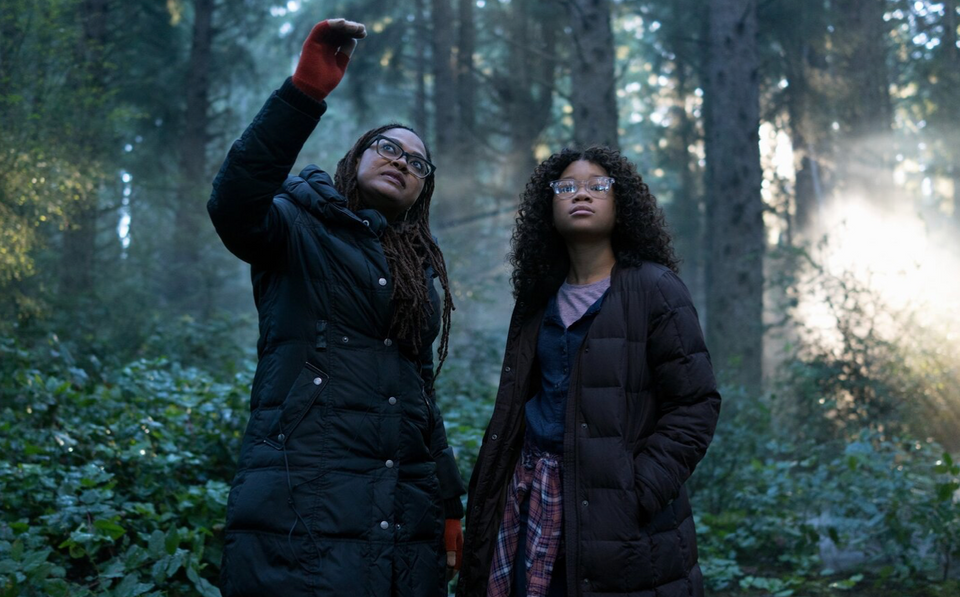I’m not much of a Star Wars fan, so I didn’t pay attention to the hoopla surrounding the 1999 release of Star Wars: Episode I, The Phantom Menace written and directed by George Lucas. It was apparently a prequel: the story of Darth Vader as a child—precocious and open to influence from…the Dark Side. Still, there was so much hype surrounding the lengthy (133 minutes) initial journey to that side of the pre-Luke Skywalker universe that I went to see it at a theater on the Upper East Side of Manhattan. I remember a little blonde, future Darth Vader, and Liam Neeson playing some kind of Jedi knight. I think Natalie Portman played a young queen or princess—with her own stand-in decoying her way through most of the film to protect the real queen.
Or so I think. Sort of.
The plot was somewhat difficult to follow. At the time, I thought, “Maybe it’s just me. Everyone else can follow the non-menacing plot of this Phantom Menace.” But I don’t think so now. Try this test at home: Here’s a synopsis of the film from the IMDb website, written by someone named “Simon.” See if you can figure out what’s going on in the phantom-weight plot of The Phantom Menace.
Simon says:
The evil Trade Federation, led by Nute Gunray is planning to take over the peaceful world of Naboo. Jedi Knights Qui-Gon Jinn and Obi-Wan Kenobi are sent to confront the leaders. But not everything goes to plan. The two Jedi escape, and along with their new Gungan friend, Jar Jar Binks head to Naboo to warn Queen Amidala, but droids have already started to capture Naboo and the Queen is not safe there. Eventually, they land on Tatooine, where they become friends with a young boy known as Anakin Skywalker. Qui-Gon is curious about the boy, and sees a bright future for him. The group must now find a way of getting to Coruscant and to finally solve this trade dispute, but there is someone else hiding in the shadows. Are the Sith really extinct? Is the Queen who she really says she is? And what’s so special about this young boy? Written by simon
Understand now? Good.
But there is another aspect to this Star Wars prequel—even beyond the convoluted plot—that was noteworthy at the time.
Its overt racism.
Star Wars: Episode I, The Phantom Menace featured a population of Ebonics-spouting brothas from the ‘hood of a distant galaxy so clearly mocking African American street culture of the 1990s that it seems the scriptwriter might well have been a Grand Wizard in the Ku Klux Klan.

Except that the scriptwriter was the sainted creator of the series himself: George Lucas.
Yet that card-carrying be-bopper dippin’ right along with his futuristic, Gungan rat pack–the thick-lipped, jive talkin’ Jar Jar Binks—proved an affront to many film critics. Amazingly, the usually socially attuned Lucas was so tone deaf to criticism that he reportedly swept aside comments from his own animation team leader at Industrial Light & Magic, Rob Coleman, who warned Lucas that the team thought Jar Jar’s character “came across poorly.” Lucas apparently responded that he specifically put Jar Jar in the film “to appeal to small children.”
Toddlers in da ‘hood, maybe.
Nevertheless, reaction was swift—and merciless. Critics quickly honed in on the oafish, slow-witted Jar Jar Binks, his long, droopy ears reminiscent of dreadlocks, and speaking what many perceived as a Caribbean patois (particularly Jamaican Creole). The jar jar brotha was described by one critic as “…servile and cowardly…a black minstrel-ish stereotype on par with Stepin Fetchit.”
Ouch—better grab your lightsaber, George, because da attacks just be startin’.
Michael Eric Dyson, professor of African-American studies at Georgetown University, observed that the entire Gungan people from which the gansta-rappin’ Jar Jar had sprung seemed oddly suggestive of a primitive African tribe. Dyson wrote: “The leader…is a fat, bumbling buffoon with a rumbling voice, and he seems to be a caricature of a stereotypical African tribal chieftain.”
Let’s not monkey about here: it is a reaction most curious, George.
Joe Morgenstern of The Wall Street Journal described the street boppin’ flyboy of prequel futures past as a “Rastafarian Stepin Fetchit in platform hoofs, crossed annoyingly with Butterfly McQueen” (the African American actress who played Prissy, Scarlett O’Hara’s maid in the 1939 film Gone with the Wind, uttering the famous line: “I don’t know nothin’ ’bout birthin’ babies!”).
A “Rastafarian Stepin Fetchit”? George—you be buggin’! And we mean: on the scary..!
Patricia J. Williams, American legal scholar and proponent of critical race theory (a school of legal thought citing race as a fundamental determinant of the American legal system), and columnist for The Nation, quickly proved herself a lady quite clearly ga-ga ‘bout dat Jar Jar, noting that many aspects of the character were reminiscent of “the archetypes portrayed in blackface minstrelsy.” And other critics suggested that J.J. be nothing mo’ than a “laid-back clown character” representing a black Caribbean stereotype.
We must conclude: if the jar jar fits, drink from it—and no doubt its cultural dregs of racism against St. George proved a bitter brew. All the while, Lucas responded only that a section of the Star Wars fanbase always gets upset with certain aspects of the series because “[t]he movies are for children but they don’t want to admit that…There is a small group of fans that do not like comic sidekicks. They want the films to be tough like The Terminator, and they get very upset and opinionated about anything that has anything to do with being childlike.”
George, you couldn’t have been more wrong. And thus St. George was all but sent into cultural exile for his pagan sins. He treaded water for a good dozen years. There were two more prequels, if you can believe it (luke-warmly received, if you will—sorry, George). And a final episode of Indiana Jones starring an over-the-hill gang including Harrison Ford, abetted by the much younger and (inexplicably) popular Shia Lebouf. St. George seemed to be riding into the sunset on a track of cinematic re-treads.
Until now.
And what does good George present to us as a final offering? As Stephen Holden reports in his New York Times review:
“Patriotic,” “jingoistic,” “old-fashioned,” “corny” and “inspirational for teenage boys.” Those are the words of George Lucas, the executive producer of “Red Tails,” describing his whiz-bang action film about African-American fighter pilots in World War II.
Mr. Lucas financed the $58 million movie, which the major studios didn’t want to touch because of the box office limitations of its mostly African-American cast.
At least “Red Tails,” the first feature film directed by Anthony Hemingway (“Treme,” “The Wire”) from a screenplay by John Ridley (“U-Turn,”“Three Kings,”“Undercover Brother”) and Aaron McGruder (“Boondocks”), is a mildly entertaining classroom instructional about the Tuskegee Airmen.
The mostly happy ending is as satisfying as a snack of milk and cookies after a ninth grade softball game.
What we have, then, is a most saintly George, arriving in theaters victorious over his battle with those evil Hollywood studios who apparently didn’t want anything to do with his latest project. And who are the main characters of his latest— and, reportedly, last—epic tale?
African Americans.
Fighter pilots in World War II, otherwise known as the Tuskegee Airmen. A golden cup of redemption served up as penance for the jarring racism of Jar Jar a dozen years earlier? We think so.
And what did all of those “racist” bad guys in the executive suites of Hollywood see when they screened (or did not screen) George’s film? Not much in the way of excitement, apparently.
As Kurt Loder writes at Reason.com:
…it’s too bad the picture is so resolutely old-fashioned and meanderingly paced…For a war movie, Red Tails is surprisingly low on grit; it’s too amiable and light-weight. The actors are fine…Despite their best efforts, though, the movie taxis around mildly without ever achieving lift-off.
But all George could see in Hollywood’s (allegedly racist) rejection of his permanently grounded aerial adventure was a band of Beverly Hills klansmen determined to kill off his noble efforts. As he said in a (brilliantly staged) interview on The Daily Show with our nation’s most trusted news anchor (and occasional comedian) Jon Stewart:
Lucas: ….It’s just exactly like Flying Leathernecks, only this one (Red Tails) was held up for release since 1942 when it was shot (audience laughter) and I’ve been trying to get it released ever since.
Stewart: You haven’t been able to get it made. Maybe when you get some sway in Hollywood, you’ll be able to get somebody to do that. (laughter)
Lucas: That’s what people say….I financed it myself, figured I could get the prints and ads paid for by the studios…I showed it to all of them, and they said, “Nooooo. We don’t know how to market a movie like this.”
Stewart: Why?!
Lucas: It’s not ‘green’ enough.
Stewart: Really?!
Lucas: They only release ‘green’ movies….It’s because it’s an all-black movie. There aren’t any major ‘white’ roles in it at all. It’s one of the first all-black action pictures ever made.
Stewart: Is that true….?
Lucas: Yeah…! (applause from audience).
And so on, as George staged a marketing coup d’état, presenting the film’s existence as a battle royale against the jackbooted, Hollywood executives who ixnayed and amscrayed their way out of George’s foray into Tuskegee-ville, leaving St. George to fend for himself in the selling of Red Tails to Americans—-flakking the race card full throttle with a media blitz targeting African Americans in the crosshairs, who seem to have bought his tale of Red Tail peril and suffering all the way from racially charged take-off to aerial battle over the Sunset Strip to a safe landing in nearby theaters across this country.
And where was our most trusted television journalist, Jon Stewart, with a question—any question—about the African American intellectuals and cultural critics seeking justice for the fireball smash-up of racism brought to them via Jar Jar in The Phantom Menace? As the U.S. Air Force might phrase it, Stewart was M.I.A.—not even raising the spectre of racism in Lucas’ past work.
Not once.
But, then, such sudden yet calculated amnesia is part and parcel of the New Journalism—a field in which 39 percent of reporters and editors have been “dishonorably discharged” with nowhere to go since 2008, in budget cuts meted out by the five multi-national corporations which control most of the Media, subjecting the American people to the sudden death of background information, an absence of context in reporting. And so: no mention from Jon Stewart during his January 2012 interchange with George Lucas of the respected, African American commentators who weighed in on the racist tendencies of The Phantom Menace.
It seemed both Lucas and Stewart were counting on the cultural, short-term memory loss of the general public relative to such events.
Lucas, it seems, is banking on it.
Presenting a heroic tale of the first African American fighter pilots in the nation, whose valor in the skies over Europe during World War II does them proud, puts the patriotic nix-nix to the jar jar of racial stereotyping found in the “black minstrelsy” of that shameless, racist flick that focused on some pint-size, primary school-age Darth Vader (being a discreet reference to that cinematic non-starter, i.e. The Phantom Menace).
What shall we say, then: George, you were caught with the prejudicial drawers of your animation stand down around your California Converse sneakers, in the Twilight Zone of casual racism as your brimming jar jar runneth over. Perhaps you felt it was time to pay the piper, to do your due diligence and, penitent as St. George, atone for the sins of The Phantom Menace.
The Confessions of St. George. Submitted for your approval. Now playing at a theater near you.



